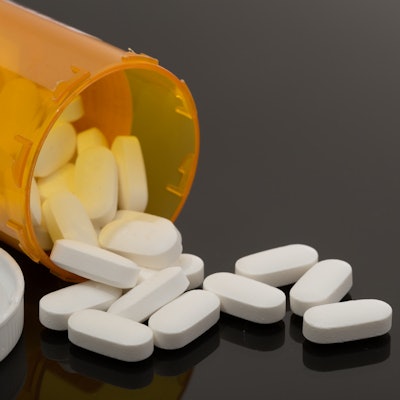
Tramadol is one of the most used opioid analgesics, but new research suggests it may have a severe side effect -- hypoglycemia. Patients who used tramadol were significantly more likely to experience low blood sugar than those who used comparable medications.
The number of tramadol prescriptions has dramatically increased in recent years, as have the number of patients visiting the hospital for tramadol-related adverse effects. Recent case reports have suggested a link may exist between tramadol and blood sugar, so a team of researchers from the University of California, San Diego (UCSD), decided to investigate. They analyzed millions of adverse event reports from the U.S. Food and Drug and Administration (FDA) and published their findings in Scientific Reports on August 28.
"The impetus was the recent dramatic surge in tramadol popularity and prescriptions," stated lead author Tigran Makunts, PharmD, a researcher at the UCSD Skaggs School of Pharmacy and Pharmaceutical Sciences, in a press release. "We wanted to have an objective data-driven look at its adverse effects and bumped into a dangerous, unlisted, and unexpected hypoglycemia."
The number of prescriptions for tramadol and other synthetic opioids has increased by 88% from 2008 to 2013. These opioids are marketed as less likely to cause dependence, which is why some dentists use them in place of conventional opioid analgesics.
However, the new research shows a significantly higher number of hypoglycemia reports for patients who used tramadol compared with other types of medication. The findings come after the researchers parsed 12 million adverse event reports from January 2004 to March 2019. They also only included patients without diabetes and who only used one type of medication.
The reporting odds ratio of hypoglycemia was 11 times higher for patients who used tramadol when compared with hydrocodone, oxycodone, and other opioids. It was also 10 times higher than patients who used a serotonin-norepinephrine reuptake inhibitor (SSRI) and 15 times higher than those who used an N-methyl-D-aspartate (NMDA) receptor antagonist.
The frequency of hypoglycemia reports was also significantly higher for tramadol than for all other types of opioid analgesics except methadone. In addition, the researchers did not find any hypoglycemia reports for oxymorphone, tapentadol, or dextropropoxyphene.
"It may be beneficial to monitor glucose levels when initiating tramadol or methadone in both diabetic and nondiabetic patients," the authors wrote. "Alternative opioids or nonopioid pain medications may be safer to use with patients at risk of hypoglycemia or any complications associated with hypoglycemia."
Senior study author Ruben Abagyan, PhD, hopes the research will motivate new studies on why tramadol has an effect on blood sugar. This research is especially important because tramadol is so widely used.
"The takeaway message is to warn physicians about the likelihood of low blood sugar (and/or high insulin content), in particular, if the patient is predisposed to diabetes," Abagyan stated.


















